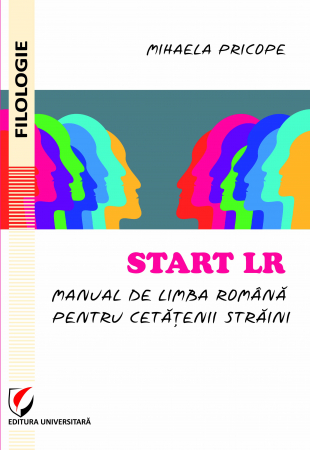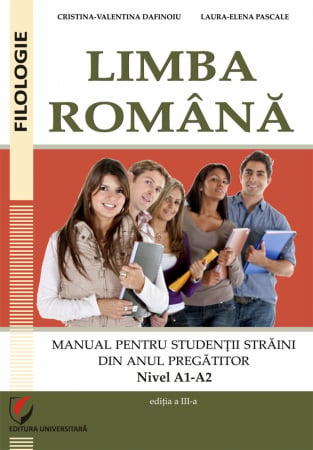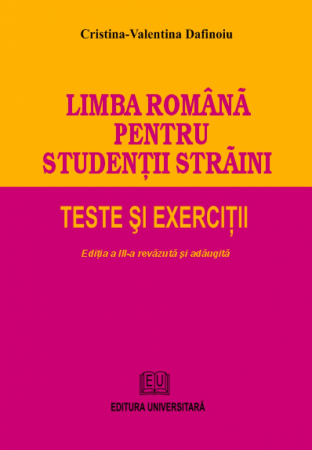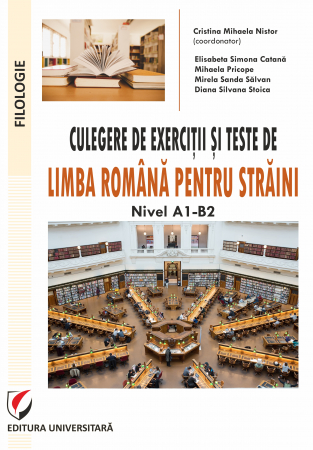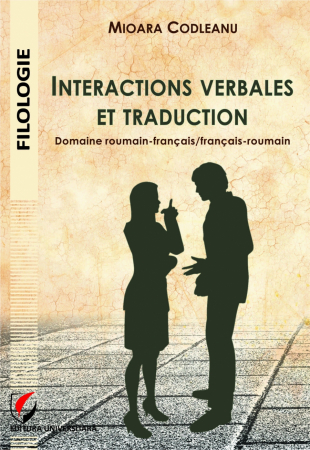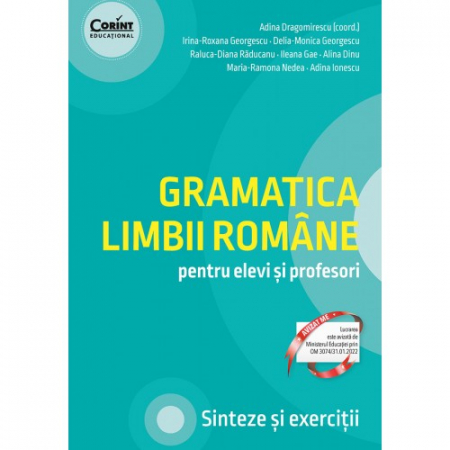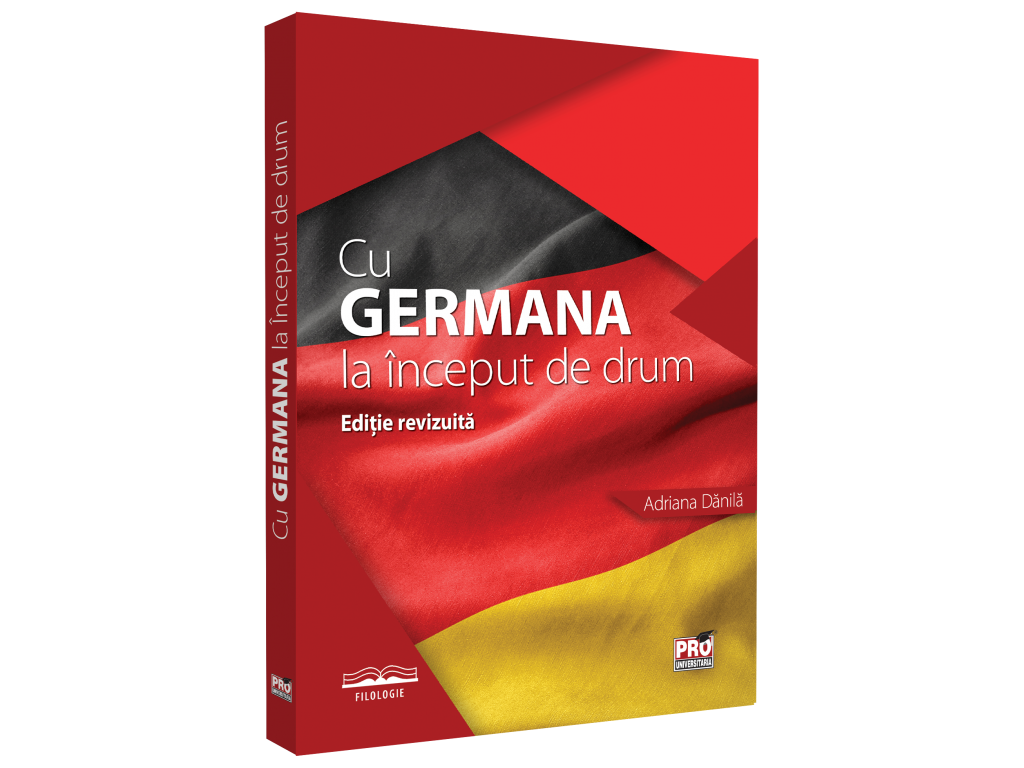ISBN: 978-606-28-1047-4
DOI: https://doi.org/10.5682/9786062810474
Publisher year: 2020
Edition: I
Pages: 272
Publisher: Editura Universitară
Author: Gabriela Aurelia Chiran
- Description
- Download (1)
- Authors
- Content
- More details
- Reviews (0)
This paper is an attempt to systematically investigate the translation phenomena and techniques highlighted in the Romanian interpretations of the novel Le Château des Carpathes / Carpathian Castle, in order to reveal the diachronic marks of the literary Romanian language, throughout the one hundred and twenty five years of confrontation with the writings of Jules Verne.
The text Le Château de Carpathes / Castle in the Carpathians, which we discuss here, enjoyed great success in the era and in posterity, reaching the sensitivity of Romanian readers and translators, as it capitalizes on a literary language in which scientific terminology the level of popularization of sciences is combined with the elements of the fictional style: a complex vocabulary, sprinkled with metaphorical expressions, with archaic, regional forms, but especially with loans, with neologisms obtained in this way of the loan or by partial or total internal creations - calculus linguistic, derivatives, compounds, conversions, combinations of all these. In addition, the novel in question was an occasion of national pride, given the fact that Transylvania, a corner of the Romanian country, provoked a special interest for the French scientific anticipator - a world-class author.
-
LIMBA ROMANA LITERARA IN TRADUCERILE SUCCESIVE DIN JULES VERNE
Download

GABRIELA AURELIA CHIRAN was born in Darmanesti commune, Dambovita county, on May 11, 1980. After graduating from high school in his hometown, she continued his studies at the "Ion Luca Caragiale" High School in Moreni.
She is a graduate of the University Pedagogical College, teachers' department - French language (1999-2002), then of the Faculty of Letters, specialization Romanian language and literature - French language and literature, within the University of Bucharest (2004-2007). In 2019 she completed the courses of the Doctoral School of Humanities of the "Ovidius" University of Constanta, Philology, with a thesis on diachronic linguistics and translation studies, with applications on Romanian translations from Jules Verne.
She is the author of several communications and specialized studies presented at national and international scientific events, has led panels in colloquia and communication sessions, and since 2016 is a member of the organizing committee of the International Symposium "Latin - Romanian - Romanian".
Some of the results of research in the field of Philology have been published in specialized journals and in collective volumes such as DICE, Culture and Communication, etc.
LOGOS AND ABBREVIATIONS / 13
INTRODUCTION / 15
CHAPTER 1
BRIEF HISTORY OF TRANSLATIONS FROM THE WORK OF JULES VERNE / 18
1.1. Jules Verne in universal literature / 18
1.2. Nantes - Paris - Amiens: the stages of becoming Jules Verne / 19
1.3. A journey through life and literature / 25
1.4. The reception of Jules Verne in the Romanian literary space / 38
1.5. Partial conclusions / 59
CHAPTER 2
BETWEEN TRANSLATIONOLOGY AND CONTRASTIVE-TYPOLOGICAL GRAMMAR / 61
2.1. The concept of "translation": definitions, translation unit / 61
2.2. Short history of translation / 65
2.3. Types of translation / 70
2.4. Translation procedures / 73
2.4.1. Direct translation procedures / 74
2.4.2. Indirect translation procedures / 76
2.5. Theories of translation / 82
2.5.1. Linguistic theories on translation / 84
2.5.2. Theories of translation and literary aesthetics / 86
2.5.3. Semiotic or "interpretive" theories / 86
2.5.4. Theories based on contrastivity / 87
2.6. Around the meaning of a word / 88
2.6.1. The referential theory of the meaning of the word / 92
2.6.2. Component analysis of meaning / 94
2.6.3. The postulates of meaning / 96
2.7. Problems of contrastive-typological grammar from the perspective of translationology / 98
2.7.1. Ambiguity / 102
2.7.2. Lexical organization of the structure of the two languages in contact / 105
2.7.2.1. Splitting and focusing / 106
2.7.2.2. Lexical gaps / 107
2.7.2.3. Oblique transcoding / 108
2.7.2.4. False friends / 111
2.7.3. Transposition / 113
2.8. Partial conclusions / 116
CHAPTER 3
CONTRASTIVE-TYPOLOGICAL ANALYSIS OF THE TEXT LE CHATEAU DES CARPTHES / THE CASTLE OF THE CARPATHIANS, BY JULES VERNE / 118
3.1. A provocative novel for Romanian translators / 118
3.2. Between translation studies and the history of literary Romanian / 121
3.3. Working tools / 124
3.4. Contrastive-typological analysis of the text Le Chateau des Carpathes / Carpathian Castle / 125
3.4.1. Contrastive-typological analysis from the perspective of communicative interactions / 190
3.4.2. Contrastive-typological approaches of the verb class / 224
3.5. Partial conclusions / 241
INSTEAD OF CONCLUSIONS:
ASPECTS OF THE ROMANIAN LITERARY LANGUAGE MANIFESTED IN THE HISTORY OF SOME TRANSLATIONS / 248
BIBLIOGRAPHY / 265
The premise from which Gabriela Aurelia Panait Chiran's work starts is that the maturity of a literary language can be appreciated also in relation to the ability to reproduce foreign writings of wide international circulation. Le Chateau des Carpathes is not, of course, a masterpiece of universal literature, it is not even the most successful writing of Jules Verne, but it is a book that has marked generations of readers from all over the globe. It represents, together with the novels of the same author, From Earth to the Moon, Around the Earth in 80 Days, etc., the fiction of popularizing science, cultivated in the era of great scientific discoveries, European post-industrialization, research trips to large parts of the Earth. Both through the period in which they were written and through their subject matter, these texts represent a certain stage in the evolution of the French language, as well as a certain style, the one that capitalizes on the literary-scientific description and the logical demonstration in close connection with the fabulous exotic and mystery. In other words, Enlightenment-type popular science combines with the fabulous romantic type, in a realistic literature, however, which foreshadows the era of the most daring achievements of human knowledge and entrepreneurship. Such texts mean not only a compositional canvas and a morphosyntactic structure marked by the spirit of the time, but also a very rich, very heterogeneous vocabulary, sprinkled with exotics related to toponyms, anthroponyms, names referring to strange objects, phenomena, processes, scientific explanations or fantasy-superstitious and so on.
Therefore, the confrontation of the Romanian language with such a text can give an interesting image on its denotative and expressive possibilities, in different stages of its historical evolution. This is the underlying premise of the research undertaken by Gabriela Chiran, from which the main objective of the study emerges. All of Jules Verne's writings were translated into Romanian, many of them - soon after their publication, but none enjoyed the prestige gained in the eyes of Romanian publishers and, as a result, of translators, such as Le Chateau des Carpathes. The reason is easy to understand: the Romanian's action takes place in the Romanian geographical space.
Even if Transylvania was part, at the time, of the Austro-Hungarian Empire, even if some names of places and characters received, in the French text, German-Hungarian resonances, the author intuited quite well the "spirit" of places, the Romanian identity , as we would say today.
Subsequent hermeneutics, genetic criticism, scientific editions of Jules Verne's work revealed treatises on physical and economic geography, albums and maps, travel notes from which he extracted details for the creation of a so-called "local color." An alleged documentary trip to Transylvania, punctuated by a romantic relationship with a beautiful local woman could not be convincingly proven. Beyond all this, for the Romanians, the book we are talking about here was and remains an occasion of national pride. It doesn't take much for a relatively small people, located on the edge of empires, with a troubled history and a written culture built in difficult conditions, to nurture such feelings!
What is certain is that the first Romanian version saw the light of day only five years after the original appeared in the princeps edition: Le Chateau des Carpathes, 1892, Paris: J. Hetzel et Cie, versus the Carpathian Castle. Novel from the life of the Romanian people from Transylvania. Translated by Victor Onisor. With a preface by Dr. E. Daianu, Sibiu: "Tipografia" SA, 1897. Seven other Romanian versions followed, at fairly regular intervals, at least in the first part of the history of these translations, the rhythmicity being in line with what the young researcher states, citing previous studies, that it would mean necessary revisions in the history of culture of any people who want to re-equate the reference books of mankind at an interval of about three decades, so as to maintain a natural link with the evolution of the literary language of the community, respectively by readers. In the Romanian space, therefore, are recorded the successive translations of Ion Pas (1929); Vladimir Colin (1980); again Vladimir Colin (1992), in a slightly revised edition; Traian Fintescu (2004); Dorina Oprea (2010); Gabriel Malaescu (2017); Mariana Riza (sine anno). In total, therefore, eight Romanian versions - in 120 years!
The central objective of Gabriela Chiran's study is to establish the diachronic marks of the Romanian literary language in this time interval.
The problem arises in terms of completing an extensive process of standardization of the Romanian language in the period called "transition" (1880-1920), through the efforts of the Romanian Academy, the Romanian school of all grades, major publications, Romanian writers of the time. Then, the discussion can be extended to the various types of internal and external conditioning of the process of shaping and refining functional styles, starting with fiction. It is about the relationship between the archaic and regional elements, on the one hand, and those in the standardized literary language, on the other hand, in the later stages of the “transition era”, on the other hand. We consider the interwar period, marked by an impressive development of Romanian literature; the post-war period, divided between the objective evolution of human knowledge and communication and the limitations of expression imposed by an oppressive political regime; then, finally, we talk about the translations made in the last three decades (1990-2019), marked by openness to any kind of spiritual manifestation and unhindered reception than by possible material obstacles, of any kind of creativity, externally and internally. . From another perspective, on this background, of the general linguistic material that the Romanian language offers in one stage or another, the problems that arise are those of the translation techniques approached by each translator (and it turns out that several types are used). of techniques and solutions in each relatively small group of linguistic sequences, with a dominance, obviously). Last but not least, it is about the personal qualities of each translator: a) the degree of knowledge (deepening) of the two languages brought into contact, at all levels of the system (phonetic effects, morphosyntactic structures, semantic features, pragmatic availability). -stylistic, historical-geographical, cultural, mental determinations, b) the talent of translator and even of creator in one's own language, working conditions, possibilities of documentation and so on
All these issues have become objectives of the research. In their turn, they imposed, as in any scientific approach of this kind, the structure of the work we are talking about here. After introducing the necessary theory, the author devotes a chapter to the general presentation of the life and work of Jules Verne, then another to the general theory of translationology. These constitute the research infrastructure itself, ensuring the understanding of the metalanguage and value judgments that Gabriela Chiran formulates throughout the pages of the actual analysis.
The analytical approach itself, which represents, naturally, the most extensive chapter in the economy of the paper, takes place from the contrastive-typological perspective, "required" objectively by the translational approach of a text.
After a brief introduction to the mechanisms of contrastive-typological grammar, the analysis focuses on three directions of translational deconstruction of the text, according to a criterion related to the classical theory of literature and, equally, to textualist and pragmatic-cognitive theories. More precisely, it starts from the idea that the modes of exposition in a novel, such as the present case, respectively the description, the narration and the dialogue, must be the criterion for grouping the extracted texts for the work corpus, made up of units taken from passages. representative of them. For each of the three subdivisions, the technical apparatus of the specific speech acts is used, as they are codified in the theoretical works in the field.
The results are at least interesting for any specialist concerned with the research fields involved in this interdisciplinary approach: the history of the Romanian language, general and applied translation studies, contrastive-typological grammar, lexicology, pragmatics of literary discourse, etc. (...)
The style of the exhibition is generally academic. The author has correctly mastered the working methods and metalanguage from the two fundamental fields of research involved - translation and contrastive typological grammar, to which are added the techniques, working tools and specialized language from descriptive grammar, language history, dialectology, theory. and the history of literature, etc. (...)
Petre Gheorghe Barlea

6359.png)
![Romanian Literary Language in Successive Translations from Jules Verne [1] Romanian Literary Language in Successive Translations from Jules Verne [1]](https://gomagcdn.ro/domains/editurauniversitara.ro/files/product/large/limba-romana-literara-in-traducerile-succesive-din-jules-verne-42-572146.jpg)
